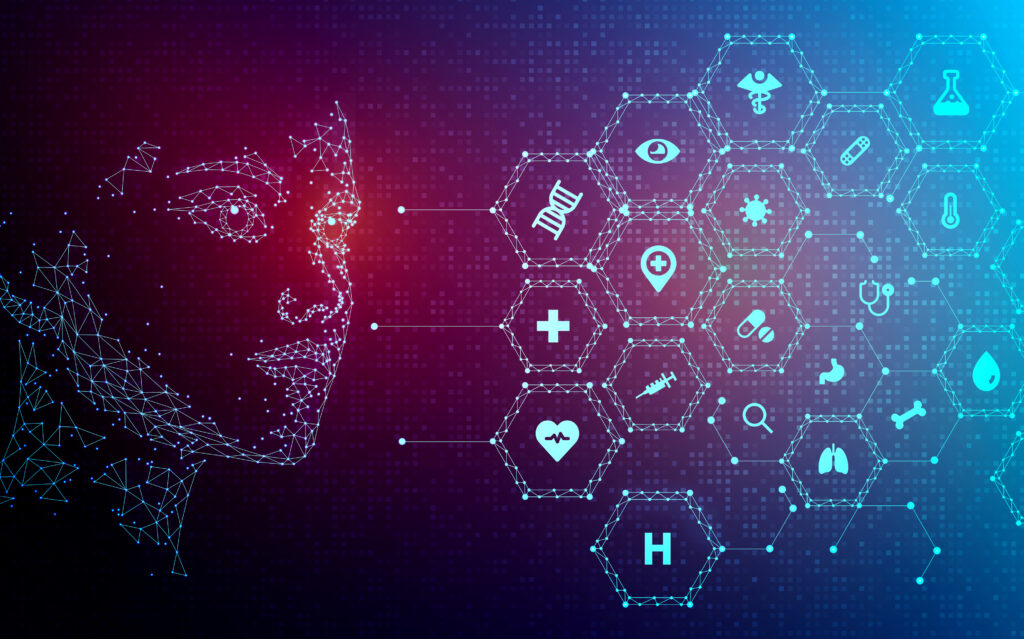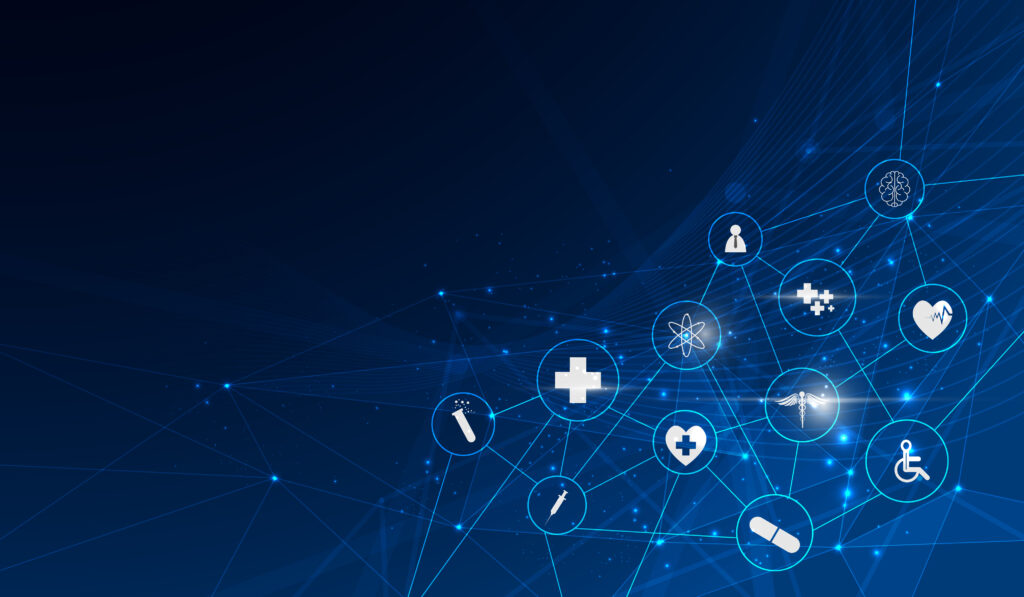Sorting out the hype vs. reality helps make the right healthcare tech choices for a connected care experience
This might seem like a weird thing for a healthcare software development provider to say: “Let’s temper the expectations for FHIR, SMART on FHIR, IoMT, and AI.”
To be clear, we remain certain these well-hyped technologies will forge a future for higher quality, more accessible care.
But technology is the means. The end is creating a connected care experience that gives doctors point-of-care confidence and keeps patients healthier and happier.
This can be maddening for healthcare technology leaders trying to determine the right mix of solutions to ensure exceptional, value-based care and access for their clients and communities.
A good first step? Let’s take an honest look at the status, limitations, and potential of loudly emerging healthcare technologies.
How Hot is FHIR Burning?

No healthcare CTO lies awake at night worrying, “How can we exchange unstructured data and take advantage of the RESTful protocol and concept of data ‘resources’ in our APIs?”
They worry about integrating data to lower costs, reduce clinical errors, and boost efficiency. They worry about hitting their KPIs.

Yet often, the FHIR (Fast Healthcare Interoperability Resources) conversation focuses heavily on the technology—how it works and why it’s better than past interoperability standards. (We have been guilty ourselves.) Organizations feel pressure to “adopt” FHIR without always having a clear direction as to why, how, and when.
The first question should always be: How do we best advance our interoperability goals?
Part of that answer will be FHIR, whether now or later.
All major EHR vendors have already created outbound FHIR APIs for patient records. And The 21st Century Cares Act mandates FHIR adoption as the healthcare interface standard.
But a total transition to FHIR in healthcare will take many years. A couple of things to consider:
- FHIR won’t immediately replace other integration standards. HL7v2 remains the most used integration standard in healthcare, used by 95 percent of U.S. healthcare organizations. Organizations invested in HL7v2 with successful results won’t always see an urgent need to adopt the next new thing. And other exchange standards such as EDI maintain widespread usage. It’s about implementing the right mix to meet interoperability goals.
- FHIR doesn’t fix everything. FHIR’s promise for data integration is clear and already visible. But every technology has some limitations. For example, although EHRs have built FHIR interfaces, they don’t all necessarily work the same way. Some might use the full specification, others only part. These variations make the hill to FHIR interoperability steeper.
Providers and healthcare software vendors still have plenty of time to develop smart near- and long-term interoperability strategies with FHIR in the mix.
When Will SMART on FHIR and IoMT Put Healthcare in People’s Hands?

Patient access feels like common sense: Get personal health data and control of care management in the hands of individual patients. This should open better, more informed communication with doctors and get patients more involved with their care.
But it’s never that neat. Let’s focus on two exciting technologies poised to promote patient access: SMART on FHIR and IoMT, which intersect when it comes to better connecting patients with health information and tools.
SMART on FHIR
The Promise: The SMART initiative set out to give patients and providers the data they need from any source on apps without committing to a single, limited vendor platform. The SMART team realized in the mid-2010s that FHIR would make it happen faster and launched SMART on FHIR.
The Present: SMART on FHIR has delivered some breakthrough apps and capabilities. notably including the Apple Health app connecting users with their personal electronic health records. But overall adoption and development remains sluggish.
For example, there are currently only 99 SMART on FHIR apps listed in the gallery maintained by the SMART Heath IT organization. This doesn’t represent every SMART development effort out there, but it is the primary showcase for companies and providers bringing SMART on FHIR apps to market.
Besides Apple, other big technology players have not really jumped in with SMART on FHIR. Google and Amazon, for example, have developed cloud FHIR API tools but have not pushed any specific SMART on FHIR solutions.
IoMT (Internet of Medical Things)

This broad category covers most every watch, armband, and mobile monitor that lets patients see and share their current, accurate health data. (It’s really much broader than that, but we’re focusing here on patient and consumer devices.) Fitbit and the Apple Watch drove widespread adoption of wearables to capture, track, and share health information. And patients regularly test, track, and share everything from glucose levels to EKGs to blood pressure with home devices.
But just as with any technology, IoMT faces challenges:
- Unique security vulnerabilities (poor and outdated code and technologies, no central management and maintenance, sheer number of different devices) can expose connected patient data.
- Ensuring accuracy and avoiding false alarms and harmful treatments.
- Need for reliable, continuous internet connectivity.
- Creating devices people will actually use (this one’s important).
A big question: Are consumers ready?
Google and Microsoft tried and abandoned high-profile efforts to connect patients with personal electronic health records. Google acknowledged that most people just weren’t ready for it. Apple pressed on with its SMART on FHIR solution that connects with many more EHR vendors.
But Apple remains coy about user adoption of personal electronic health records on the Apple Watch—even though every watch buyer gets the app preloaded and free.
The lesson: We can’t forget about the end users. Great technology only succeeds if people want to use it, and sometimes they need time to catch up to technology advances. Particularly when it comes to the sensitive, personal nature of healthcare technology.
Can Healthcare Finally Harness AI for Better Care and Lower Costs?

In January 2022, IBM sold off its Watson Health AI platform for $1 billion, a disappointment after years of excitement and many billions of dollars in development investment.
Is it a sign that AI for healthcare has failed?
Definitely not. AI and machine learning have promise we still cannot even completely comprehend in healthcare.
Healthcare AI has no limits but it still requires actual human intelligence to implement effectively. Within AI, machine learning promises to improve everything from claims and billing processes to precise robot surgeries.
And AI isn’t a product. You can’t just buy an “AI” and plug it in and make your healthcare data and networks smarter and accelerate quality care.
Technology must be aligned with purpose and outcomes. IBM Watson and Deep Blue were beating geniuses in chess and advancing AI well ahead of the market. But Watson Health never seemed to align AI technology with solving specific healthcare problems.
Don’t Give in to Health Tech FOMO

Don’t let fear of missing out (FOMO) on the newest, trendiest healthcare technologies cloud your development strategies for you or your healthcare customers:
- You and your customers don’t need a FHIR strategy. You need an interoperability strategy.
- You don’t need a SMART on FHIR or IoMT strategy. You need a mobile patient access strategy.
- And you don’t need an AI or machine learning strategy. You need an analytics and automation strategy.
If you’ve read this far, the refrain is familiar: Healthcare often focuses on the remarkable possibilities of innovative technologies more than their practical application for achievable results.
But while there is pressure to meet the market, you absolutely have time to craft the best technology strategies for you and your healthcare customers.
Don’t do-it-yourself. Let KMS Healthcare help you guide, advise, and accelerate the right technology path for your exceptional healthcare solutions.
Also, be ready to plug in the KMS Connect healthcare platform that connects systems through FHIR, HL7v2, EDI, flat files, and everything in between.

Schedule a consultation with the KMS Healthcare team to ease the FOMO and make cutting-edge FHIR, SMART, AI, and IoMT healthcare technology advance goals for you and your customers while keeping patients healthier and happier.